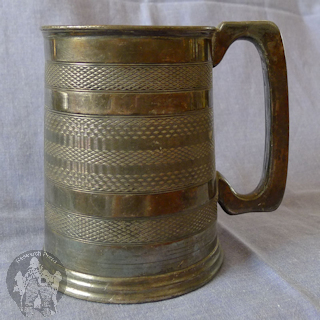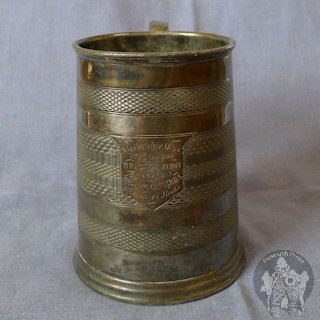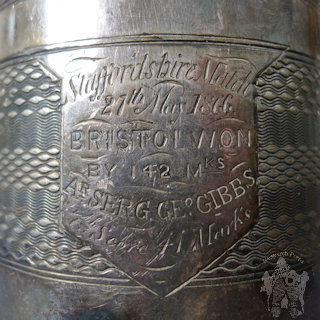You are here: Home > British Military > Volunteer Force
Written by: David Minshall
By the mid-1860s the Volunteer Movement in Great Britain was well established and rifle shooting, thanks also to the establishment in 1859 of the National Rifle Association, had become a popular pastime.
On 8 April 1865 there was a hugely supported ‘simultaneous Enfield rifle match’ fired. Volunteer Battalions and/or Companies throughout the country had opportunity to compete, shooting on their own ranges and submitting scores. Details of the competition were published in January 1865.
The arm to be used was the “Long Enfield rifle” (Pattern 1853, commonly referred to the 3-band Enfield today) or the “Short Enfield three-grooved rifle (two-band Enfield), of Government pattern, with a minimum trigger pull of 6lb and Government ammunition.” Targets were the Wimbledon 1863 pattern. Ranges were 200, 500, and 600 yards, with seven rounds at each range; firing from the shoulder (i.e. standing) at 200 yards, and any position at 500 and 600 yards. Competitors were Battalion teams of 20 and Company teams of 10.
One hundred and eleven battalions in their squads of twenty members each, and two hundred and ninety eight companies of ten members each, entered the competition, so that in all, and allowing for some double entries, there would have been over 5,000 Volunteers engaged in this remarkable undertaking. Towards the end of April results were published. The £100 first prize in the Battalion competition was won by 1st North York Volunteers, and the £50 Company prize by 8th Aberdeenshire Volunteers. Ensign Coutts of 8th Aderdeenshire won the £25 prize for individual firing.
In concluding a report with the full published results, the Western Daily Press (a Bristol newspaper) of 24 April 1865 noted that:
“A match has been arranged to take place between the Bristol Rifle Corps and the First Staffordshire Administrative. The Staffordshire battalion first threw out a challenge that twenty of their men should fire with twenty of the Bristol men. A reply was sent that it was the custom of the Bristol Corps to shoot with not less than forty men. After some negotiations it was agreed that thirty men should be selected from each corps, and that the competition should take place on neutral ground.”
This match eventually took place at Gloucester in May 1865. The thirty men on each side fired five shots at 200, 500, and 600 yards (Wimbledon target of 1864). The contest, as was expected, proved a close one. The weather was however most unfavourable for shooting, with the wind veering continually from side to side, and at times increasing in strength, and at other times dropping, resulting in scores being much less than expected. Bristol won by a narrow margin:
| Team | 200yd | 500yd | 600yd | Total |
| Bristol Rifles | 390 | 321 | 272 | 983 |
| First (A) Battalion Staffordshire Rifles | 405 | 332 | 241 | 978 |
The top scorer for Bristol was Private J. Baker with 47 points, and for Staffordshire was Private Draycott with 48 points. In a report in Bristol Times and Mirror, Saturday 3 June 1865, it was noted that “the contest was very exciting, the Staffordshire men leading up to the last range, when the shooting of Messrs. Baker, Bingham, and Marsh gained the victory for Bristol. At the last stage Sergeant Bingham made the splendid score of four bull’s eyes and a centre, and Private Baker three bull’s eyes and two centres.”
A return match between thirty members of the 1st Battalion Staffordshire Rifle Volunteers and thirty of the 1st Gloucestershire (Bristol) Rifles took place on Saturday 26 May 1866 on the range of the 1st Warwickshire, at Bournbrook, near Birmingham. It resulted in the complete defeat of the 1st Stafford. The results were:
| Team | 200yd | 500yd | 600yd | Total |
| First Gloucestershire (City of Bristol) | 434 | 363 | 318 | 1115 |
| First (A) Battalion Staffordshire Rifles | 410 | 332 | 231 | 973 |
At the conclusion of the match the two sides dined together at an inn near to the range, during which several toasts were proposed and responded to.
By the terms of the competition the Staffordshire men had to present ten cups to the ten highest scores by Bristol men; and the latter presented one cup to the highest score made on the Staffordshire side. Sergeant H. Palmer (2nd Hanley) took the cup for Staffordshire, having made the highest score on his side (44).
The Bristol men awarded cups were:
| Name | 200yd | 500yd | 600yd | Total |
| Private Gouldsmith | 14 | 17 | 18 | 49 |
| Lieutenant Wright | 16 | 13 | 16 | 45 |
| Sergeant Lane | 15 | 14 | 15 | 44 |
| Private Brittain | 14 | 14 | 15 | 43 |
| Private Ridler | 13 | 14 | 15 | 42 |
| Private Baker | 15 | 13 | 14 | 42 |
| Sergeant Gibbs | 14 | 12 | 15 | 41 |
| Private Britt | 15 | 11 | 15 | 41 |
| QM-Sergeant Hutchinson | 13 | 10 | 17 | 40 |
| Private King | 17 | 15 | 8 | 40 |
Sergeant Henry Lane (1825-1871), a plumber by trade, was a noted rifle shot in Bristol. In 1867 he won the Queen’s Prize at Wimbledon.
The tankard illustrated below was awarded to 7th placed Armourer-Sergeant George Gibbs, the well-known Bristol gunmaker.


Staffordshire Match
27th May 1866
BRISTOL WON
BY 142 Mks.
Ar. SERG. Geo. GIBBS
7th score of 41 Marks

George Gibbs is noted amongst long range riflemen for his association with William Metford and the manufacture of the muzzle loading Gibbs-Metford match rifle and the later breech loading Gibbs-Farquharson-Metford rifle. For more information see:
- George Gibbs
- William Metford
- John Farquharson
| Wimbledon (1864) Target | 200yd | 500yd | 600yd | Score |
| Bull | 8 inch square | 24 inch square | 24 inch square | 4 |
| Centre | 24 inch square | 48 inch square | 48 inch square | 3 |
| Outer | 72 inch high x 48 wide | 72 inch square | 72 inch square | 2 |